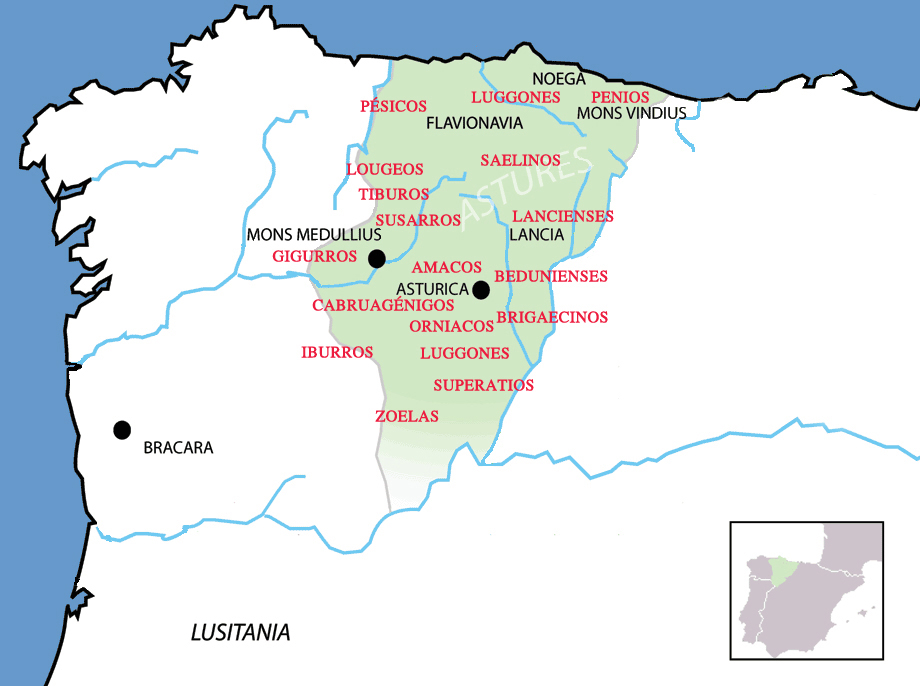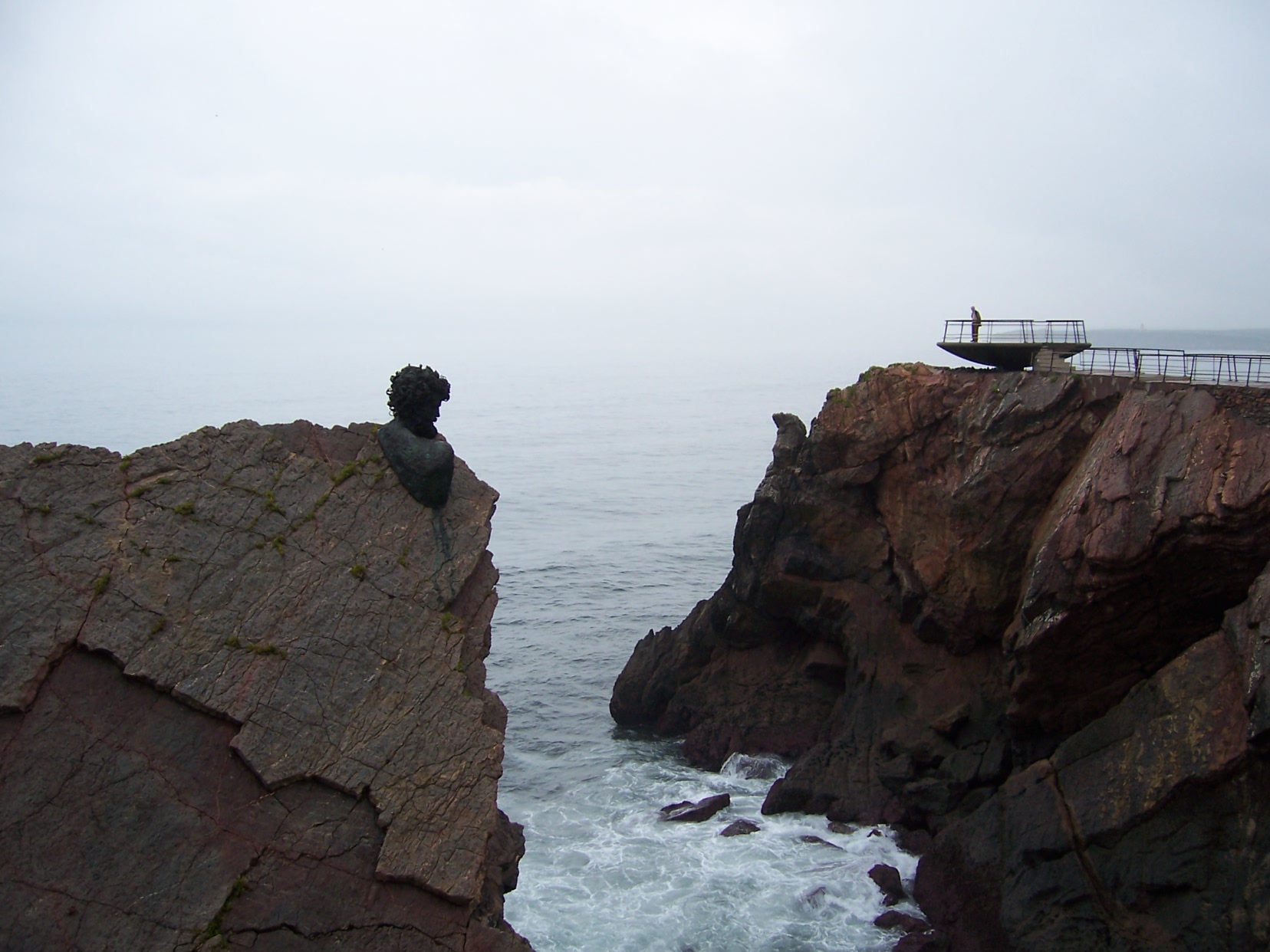|
Corvera De Asturias
Corvera de Asturias ( Asturian: ''Corvera'') is a municipality in the principality of Asturias in northern Spain. It shares a boundary to the north with Avilés and Gozón; to the east with Carreño and Gijón; to the south with Llanera and Illas and to the west with Castrillón. Its capital, Nubledo, has a population of more than 300 residents. Corvera is the most eastern of the four counties forming the Great County of Aviles. It is situated in the northern-central area of the Principality of Asturias. It is in size and has a population of over 16,000 residents, mainly concentrated in the villages of Las Vegas and Los Campos. The main roads to get there are AS-19, AS-17 and A-8. The A-8 proceeds to Tabaza (Carreño) and the shopping centre Parque Astur. History The history of Corvera is linked to the history of Avilés, being a natural extension of it proceeding inland. Several prehistorical settlements have been found in the county. The most interesting are those belongin ... [...More Info...] [...Related Items...] OR: [Wikipedia] [Google] [Baidu] |
Municipalities Of Spain
The municipality ( es, municipio, , ca, municipi, gl, concello, eu, udalerria, ast, conceyu)In other languages of Spain: * Catalan/Valencian (), sing. ''municipi''. * Galician () or (), sing. ''municipio''/''bisbarra''. *Basque (), sing. ''udalerria''. * Asturian (), sing. ''conceyu''. is the basic local administrative division in Spain together with the province. Organisation Each municipality forms part of a province which in turn forms part or the whole of an autonomous community (17 in total plus Ceuta and Melilla): some autonomous communities also group municipalities into entities known as ''comarcas'' (districts) or ''mancomunidades'' (commonwealths). There are a total of 8,131 municipalities in Spain, including the autonomous cities of Ceuta and Melilla. In the Principality of Asturias, municipalities are officially named ''concejos'' (councils). The average population of a municipality is about 5,300, but this figure masks a huge range: the most populo ... [...More Info...] [...Related Items...] OR: [Wikipedia] [Google] [Baidu] |
Municipality
A municipality is usually a single administrative division having corporate status and powers of self-government or jurisdiction as granted by national and regional laws to which it is subordinate. The term ''municipality'' may also mean the governing body of a given municipality. A municipality is a general-purpose administrative subdivision, as opposed to a special-purpose district. The term is derived from French and Latin . The English word ''municipality'' derives from the Latin social contract (derived from a word meaning "duty holders"), referring to the Latin communities that supplied Rome with troops in exchange for their own incorporation into the Roman state (granting Roman citizenship to the inhabitants) while permitting the communities to retain their own local governments (a limited autonomy). A municipality can be any political jurisdiction, from a sovereign state such as the Principality of Monaco, to a small village such as West Hampton Dunes, New York. Th ... [...More Info...] [...Related Items...] OR: [Wikipedia] [Google] [Baidu] |
Ancient Rome
In modern historiography, ancient Rome refers to Roman civilisation from the founding of the city of Rome in the 8th century BC to the collapse of the Western Roman Empire in the 5th century AD. It encompasses the Roman Kingdom (753–509 BC), Roman Republic (509–27 BC) and Roman Empire (27 BC–476 AD) until the fall of the western empire. Ancient Rome began as an Italic settlement, traditionally dated to 753 BC, beside the River Tiber in the Italian Peninsula. The settlement grew into the city and polity of Rome, and came to control its neighbours through a combination of treaties and military strength. It eventually dominated the Italian Peninsula, assimilated the Greek culture of southern Italy ( Magna Grecia) and the Etruscan culture and acquired an Empire that took in much of Europe and the lands and peoples surrounding the Mediterranean Sea. It was among the largest empires in the ancient world, with an estimated 50 to 90 million inhabitants, roughly 20% of t ... [...More Info...] [...Related Items...] OR: [Wikipedia] [Google] [Baidu] |
Solís
Solís is a resort (''balneario'') in the Maldonado Department of southeastern Uruguay. Location The resort is located on the coast of Río de la Plata, on Route 10 and close to its junction with Ruta Interbalnearia. To its west flows the stream Arroyo Solís Grande, which is the natural border with the Costa de Oro of Canelones Department The Departamento de Canelones ( es, Departamento de Canelones; ) is one of the 19 uruguayan departments. With an area of and 518,154 inhabitants, it is located in the south of Uruguay. Its capital is Canelones. Geography and climate Neighbou .... To its east it borders the resort Bella Vista. Population In 2011 Solís had a population of 288 permanent inhabitants and 632 dwellings. Source: ''Instituto Nacional de Estadística de Uruguay'' References External links INE map of Solís and Bella Vista Populated places in the Maldonado Department Seaside resorts in Uruguay {{Maldonado-geo-stub ... [...More Info...] [...Related Items...] OR: [Wikipedia] [Google] [Baidu] |
Molleda
Molleda is one of seven parishes (administrative divisions) in the Corvera de Asturias municipality, within the province and autonomous community of Asturias, in northern Spain. The population is 717 (INE INE, Ine or ine may refer to: Institutions * Institut für Nukleare Entsorgung, a German nuclear research center * Instituto Nacional de Estadística (other) * Instituto Nacional de Estatística (other) * Instituto Nacional Elec ... 2006). Villages *Barrio Molleda *Candamo *Carruébano (Carruébanu) *Castiello (Castiellu) *El Barrial *El Molino (El Molín) *Moncó *El Pidre *El Pino (El Pinu) *El Sabledal *Entrialgo *Esquilera *La Estebanina (Estebanina) *García *Grandellana *Juncedo Campo (Xuncéu) *La Cogulla *La Escuela (La Llaguna) *La Peluca *La Reguera *La Sierra *La Trapa *Lavandera (Llavandera) *Llandones *Los Espinos *Peruyal (La Peruyal) *Ralla *Villanueva References Parishes in Corvera de Asturias {{asturias-geo-stub ... [...More Info...] [...Related Items...] OR: [Wikipedia] [Google] [Baidu] |
Astures
The Astures or Asturs, also named Astyrs, were the Hispano-Celtic inhabitants of the northwest area of Hispania that now comprises almost the entire modern autonomous community of Principality of Asturias, the modern province of León, and the northern part of the modern province of Zamora (all in Spain), and eastern Trás os Montes in Portugal. They were a horse-riding highland cattle-raising people who lived in circular huts of stone drywall construction. The Albiones were a major tribe from western Asturias. Isidore of Seville gave an etymology as coming from a ''river Asturia'', identified by David Magie with Órbigo river in the plain of León, by others the modern Esla river. Location The Asturian homeland encompassed the modern autonomous community of Asturias and the León, eastern Lugo, Orense, and northern Zamora provinces, along with the northeastern tip of the Portuguese region of Trás-os-Montes. Here they held the towns of ''Lancia'' (Villasabariego – Leó ... [...More Info...] [...Related Items...] OR: [Wikipedia] [Google] [Baidu] |
Los Campos
LOS, or Los, or LoS may refer to: Science and technology * Length of stay, the duration of a single episode of hospitalisation * Level of service, a measure used by traffic engineers * Level of significance, a measure of statistical significance * Line-of-sight (other) * LineageOS, a free and open-source operating system for smartphones and tablet computers * Loss of signal ** Fading **End of pass (spaceflight) * Loss of significance, undesirable effect in calculations using floating-point arithmetic Medicine and biology * Lipooligosaccharide, a bacterial lipopolysaccharide with a low-molecular-weight * Lower oesophageal sphincter Arts and entertainment * ''The Land of Stories'', a series of children's novels by Chris Colfer * Los, or the Crimson King, a character in Stephen King's novels * Los (band), a British indie rock band from 2008 to 2011 * Los (Blake), a character in William Blake's poetry * Los (rapper) (born 1982), stage name of American rapper Carlos Col ... [...More Info...] [...Related Items...] OR: [Wikipedia] [Google] [Baidu] |
Castrillón
Castrillón is a municipality in Asturias, located on the central coast. It has an area of 56.70 km² and a population of 22,361 inhabitants (in 2005). The most important population centres are the capital Piedras Blancas, Salinas, and Raíces. Asturias Airport is located in Castrillón. The airport is located in Anzu, parish of Santiago del Monte, municipality of Castrillón, 15 km from Avilés, 40 km from Gijón and 47 km from the regional capital, Oviedo. Geography Situated on the littoral plain, the county is one of the flattest areas in Asturias. Its coast is formed by a series of beaches and cliffs. For this reason, the county is known as "the county of the 7 beaches", even though there are more than seven beaches along its long coastline. Inland, the area is characterized by the smoothness of the landscape, mainly formed by fertile valleys with a small river network that crosses the county. The altitude increases steadily towards the Southwest, ... [...More Info...] [...Related Items...] OR: [Wikipedia] [Google] [Baidu] |
Illas
Illas is a municipality in Asturias, Spain, located in the western central part of the province and bordered by the municipalities of Castrillón, Candamo, Llanera, and Corvera de Asturias. Parishes There are three parishes (administrative divisions): *Illas * La Peral *Villa Geography The area of Illas is very hilly. One of the most remarkable is the Pico Gorfolí with a height of 619 meters above sea level. The county of Avilés, Cabo Peñas, and the Bay of Biscay can be viewed from Pico Gorfolí. If the sky is cloudless, one can observe the Picos de Europa. Economy The county has an economy based on agricultural and cattle trading. This is reflected in two kinds of cheeses, the cheese of ''La Peral'' and Taborneda known as "''Gorfolí''". With the arrival of the industry Industry may refer to: Economics * Industry (economics), a generally categorized branch of economic activity * Industry (manufacturing), a specific branch of economic activity, typically in factorie ... [...More Info...] [...Related Items...] OR: [Wikipedia] [Google] [Baidu] |
Llanera, Asturias
Llanera is a municipality in the Autonomous Community of the Principality of Asturias, Spain. It is bordered on the north by Gijón and Corvera de Asturias, on the south by Oviedo, on the east by Gijón and Siero, and on the west by Illas and Las Regueras. Its capital is located 11 km from Oviedo, 20 km from Avilés, and 22 km from Gijón. Renfe, the national railroad organization, has stations in Lugo de Llanera, Villabona y Ferroñes. The municipality has an important industrial sector. There are industrial parks at Silvota and Asipo. There is a penitentiary in Villabona. Lugo de Llanera was founded as a Roman settlement, named ''Lucus Asturum''. It is situated at the fork of the Roman roads to Astorga and Cantabria. Parishes A parish is a territorial entity in many Christian denominations, constituting a division within a diocese. A parish is under the pastoral care and clerical jurisdiction of a priest, often termed a parish priest, who might be assiste ... [...More Info...] [...Related Items...] OR: [Wikipedia] [Google] [Baidu] |
Gijón
Gijón () or () is a city and municipality in north-western Spain. It is the largest city and municipality by population in the autonomous community of Asturias. It is located on the coast of the Cantabrian Sea in the Bay of Biscay, in the central-northern part of Asturias; it is approximately north-east of Oviedo, the capital of Asturias, and from Avilés. With a population of 271,780, Gijón is the 15th largest city in Spain. Gijón forms part of a large metropolitan area that includes twenty councils in the center of the region, structured with a dense network of roads, highways and railways and with a population of 835,053 inhabitants in 2011, making it the seventh largest in Spain. During the 20th century, Gijón developed as an industrial city in the steel and naval industries. However, due to the decline in manufacturing in these industries, in recent years Gijón is undergoing a transformation into an important tourist, university, commercial and R&D center. Gijón ... [...More Info...] [...Related Items...] OR: [Wikipedia] [Google] [Baidu] |



